| 1 | Red-tailed coral snake |
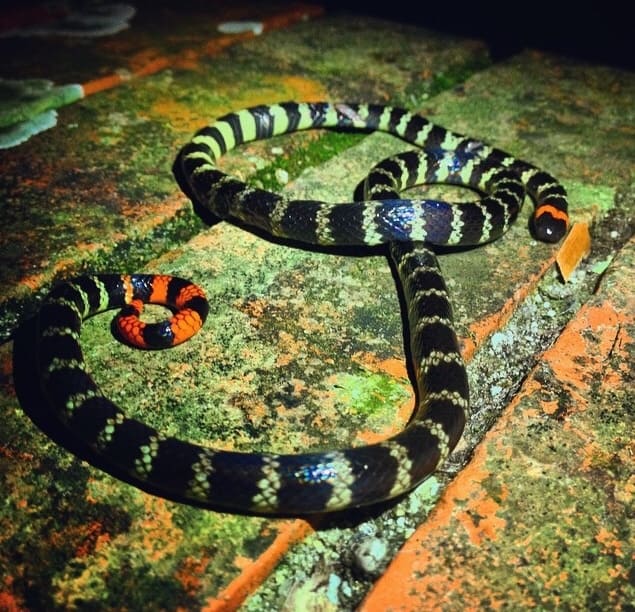
As kids learn at a young age, it’s often the small, brightly coloured snakes you should fear rather than the big brutes. The red-tailed coral snake is an embodiment of that, living casually on the forest floor, doing absolutely nothing and being all the more menacing for it. This 100-140cm species is found across a swathe of South America, and mostly eats smaller snakes, including thread snakes and Werner’s ground snakes.
Like all coral snakes, pursuing humans is extremely rare, virtually unheard of. Micrurus mipartitus is a calm snake which only bites if picked up or accidentally brushed past. Yet this doesn’t reduce the eerie quality of one lying on a moss-covered log.
What takes the red-tailed coral snake to the next level is its extremely black face and eyes. Most coral snakes have red, yellow and black bodies, but this species might have the blackest face of all. The fact that its eyes are totally black creates a big sheet of nothingness.
| 2 | Kelung catsnake |
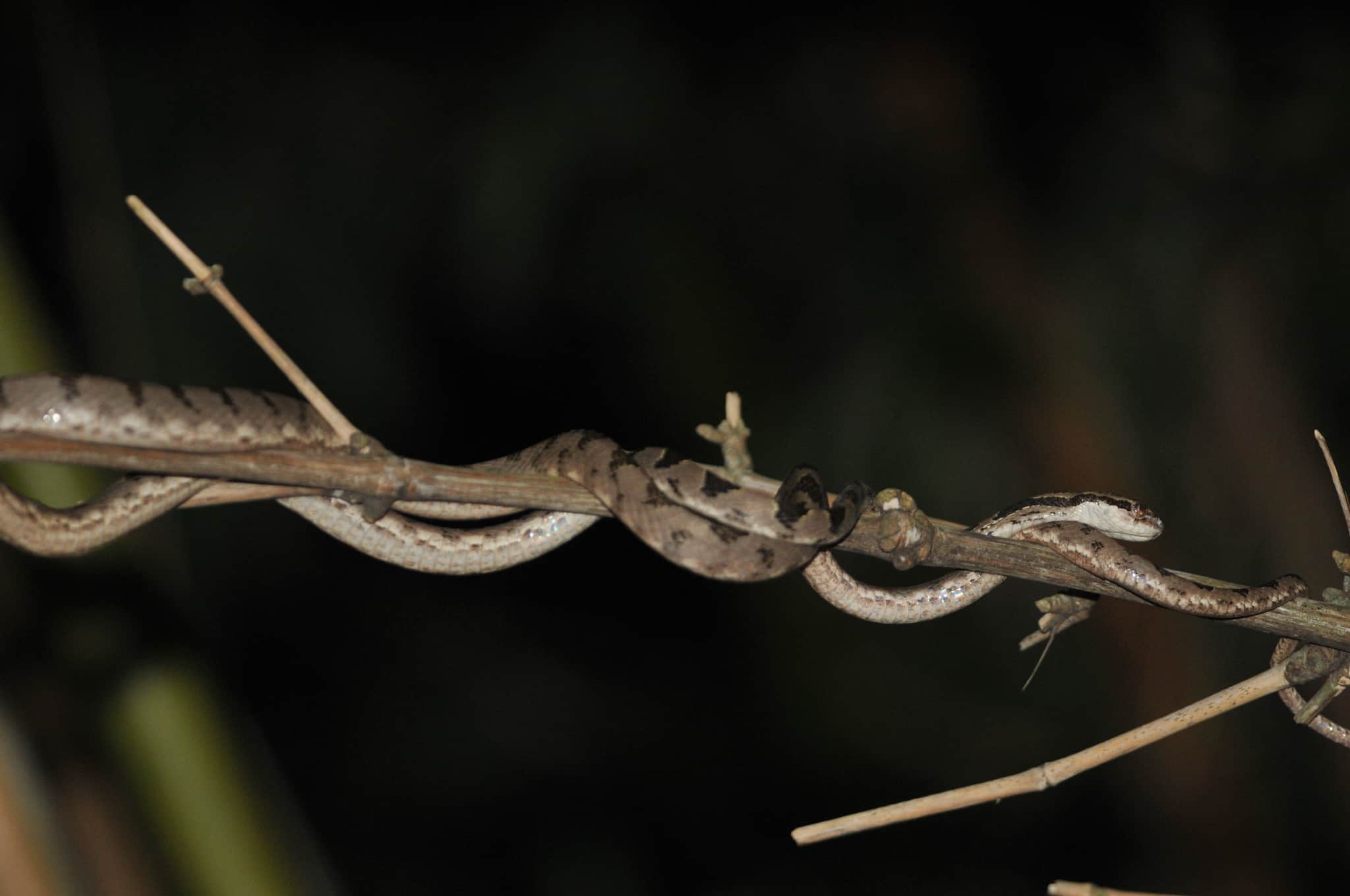
A Chinese snake with a maximum length of 160cm, and a diet of lizards and small birds. Kelung catsnakes hang out in forests near villages, where they spend their life resting on branches 2-5 metres above ground. The environments they live in are already eerie, with gnarly branches, dimming light, and lengthening shadows. But the eeriest thing is how their heads follow you as you walk by.
The Kelung catsnake (Boiga kraepelini) has a calm temperament, and isn’t bothered by human presence. It’s rare for them to flee from branches, as they normally stay still instead. They’re curious snakes which are always investigating passing creatures, using their sharp eyesight.
Kelung catsnakes move their heads slowly, never breaking eye contact, like one of those old paintings that always seems to be looking directly at you. This is pretty unnerving, particularly if you don’t realise that they’re perfectly harmless (with a mild venom). The Kelung catsnake has a blank expression and large eyes, which are perfect for spotting lizards moving along distant tree branches. They occasionally descend to the ground to find a superior tree to occupy.
| 3 | Neuwied’s pitviper |
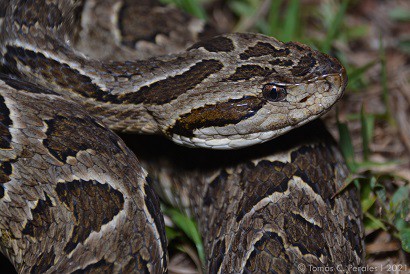
Bothrops neuweidi is the resident pitviper of southern Brazil, particularly wide open cerrado grasslands. This is an extremely menacing looking snake. Their mouth is a hungry snarl, while their eyes seem to be furrowed downwards in a determination to bite.
There’s no fun green colours, just a serviceable black and grey. However, it’s very rare for Neuwied’s pitvipers to charge at people, eyes spinning madly. Instead, they’re a sedentary snake which can go days without moving. They live a relaxing lifestyle, yet the anger is permanently etched all over their face. Bothrops neuwiedi mostly just sit there looking enraged, doing little else.
It’s like this snake is biding its time, having chosen a secluded corner of the world where it can regain its strength after a heavy defeat. This snake rarely attacks unless provoked, so you’ll probably first spot it out of the corner of your eye, motionless in a clump of grass. Their venom mainly consists of cytotoxins which cause necrosis, but is easily treatable with antivenom, if someone can guide you to a medical hut in time.
| 4 | Indian cobra |
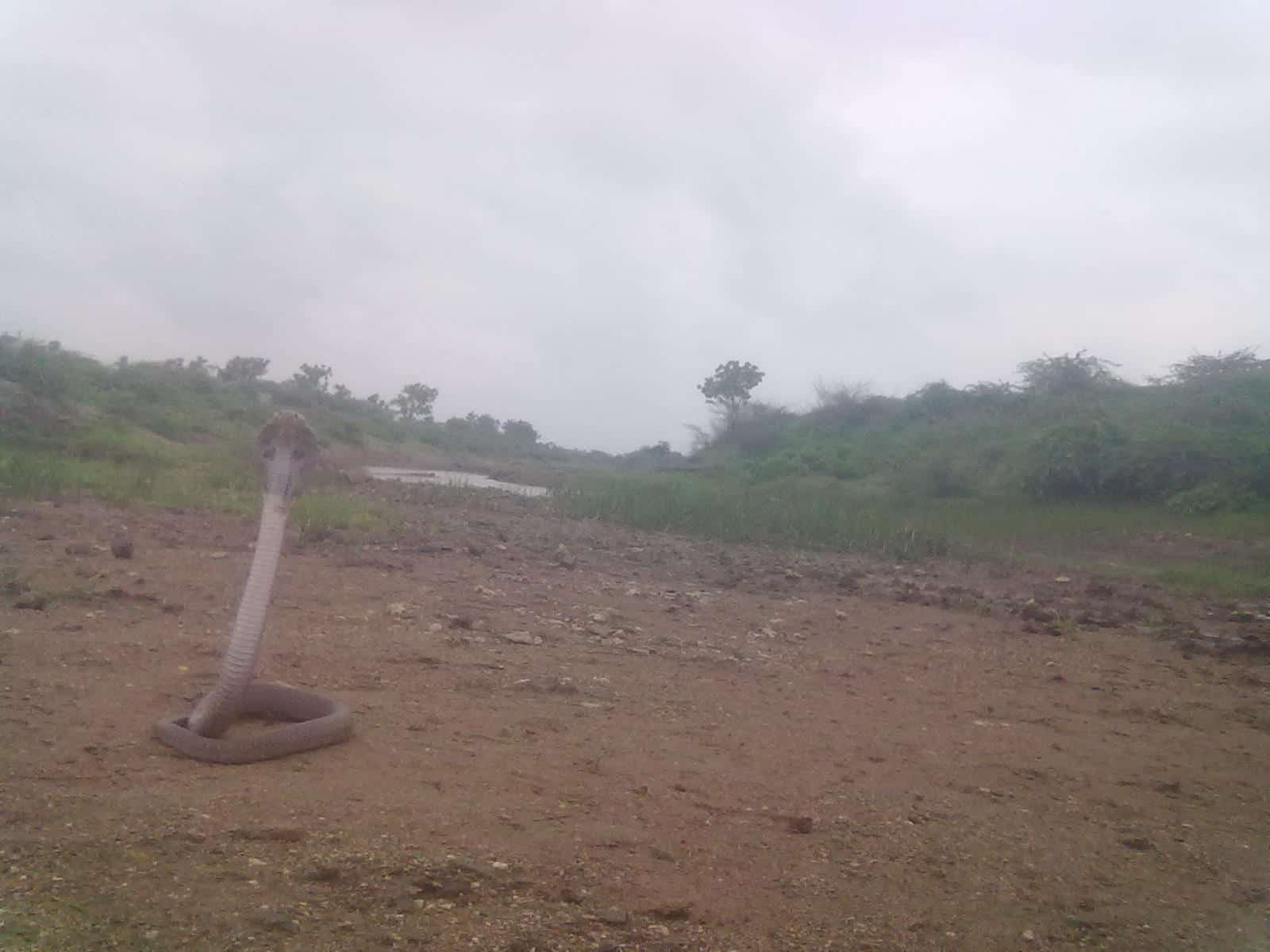
The Indian cobra is overwhelmingly the most common cobra in India, with monocled cobras in the extreme northeast and Caspian cobras inhabiting the northwest. The fear is already intense, as their neurotoxic venom is capable of disabling lung inflation and deflation. Everyone knows that cobras rear up, spread their hoods and hiss when they meet an enemy. Their goal is to give people one last chance to back off before they lunge.
The eerie thing is when Indian cobras are spotted in villages, parks or by roads, rearing up for apparently no reason. They’re sitting still and look extremely alert and focussed, despite the lack of any humans. There’s no threat, yet they’re just sitting there waiting.
It’s impossible to tell what these cobras are thinking. Some Indian villagers have heart attacks at the mere sight of these patient, prepared cobras. It would be more comforting if they were hissing and charging, because at least we would understand them. But no: these Indian cobras have instincts far removed from from the human race. Indian cobras are also faster slitherers which can cover ground rapidly.
| 5 | Green tree snake |
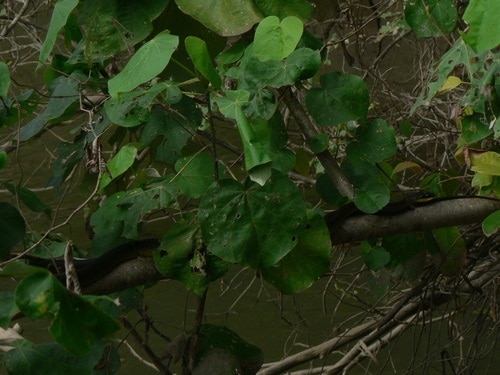
The green tree snake of Australia doesn’t look too eerie, with its calm face and grassy green colours. It’s their behaviour that’s worrying; they have a strange tendency to congregate in random trees, for reasons nobody has successfully explained.
A tree which was empty the previous day can suddenly be home to a smiling green snake. The next day they’ll be joined by another, followed by another two from easterly parts. Suddenly, the tree will be full of calm, confident snakes, which seem very pleased about something only they know, and aren’t bothered by humans walking past below. Garter snakes gather together to preserve warmth, prairie rattlesnakes gather to protect hatchlings, but nobody has explained this phenomenon.
This species has a superb sense of direction, as they return to the same tree every year. Scents might be the trick, or they could be guided by old rocks and logs which they recognise. Green tree snakes can stay in their trees for several weeks, swaying with the branches in the wind. When their business is done, the snakes disperse in different directions, until the cycle resumes the next year.
| 6 | Cottonmouth |
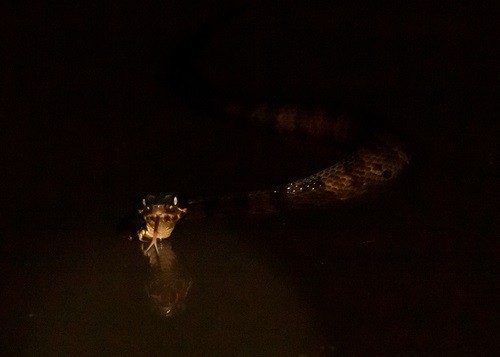
This snake mainly lives in swamps of the southern US, or small gloomy lakes. Cottonmouths don’t like sunlight much, and are likely to come out when light dims and storm clouds blow in, with a steadily strengthening wind. Cottonmouths often appear in swamps on the edges of paths, but being slow movers, they usually stay hidden. Often, you’ll know for a fact that they’re there, yet they have no inclination to reveal themselves.
Cottonmouths have slits of vertical pupils which can sometimes be seen poking from leaves or against lake shores. Though armed with a cytotoxic venom, they rarely stray from their dark, swampy domains where they’re comfortable. Every step you walk down the forest trail may be bringing you closer to the realm of the cottonmouth. They’re commonly spotted resting motionless on shores, possibly asleep yet possibly awake and waiting patiently.
Cottonmouths have brown and black scales with barely any variety across the species, as this could compromise their camouflage. They measure 100-150cm, and mainly eat fish, whatever species lives in their particular swamp.
| 7 | Reticulated python |
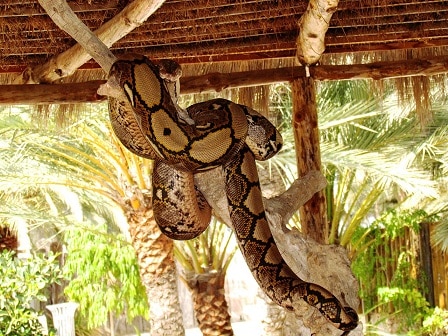
The reticulated python is the largest snake on Earth and could probably constrict a small saltwater crocodile. However, they can also spook people by staying completely still.
Reticulated pythons are comfortable in towns and cities, slithering down paved roads. They’re also fond of climbing things, nestling in comfortably. Consequently, Thai or Indonesian workers sometimes arrive home to find a 5 metre snake coiled around the roof of their wooden house, doing nothing except moving their cunning eyes. The pic above says it all: reticulated pythons coil around random buildings like a jumbo version of a normal snake, seemingly unaware that they’re the largest species on Earth.
Reticulated pythons actually coil similarly to catsnakes, not in particularly tight formation, and this just makes them look grotesquely oversized. They can also appear in dingy alleyways, forcing you to perform an instant 180 spin while saying “nope”. Reticulated pythons can appear on roofs without anybody noticing them move, as though they’ve materialised out of thin air. Like all snakes, they operate with rules of their own which we can’t possibly hope to understand.
| 8 | Yellow-bellied sea snake |
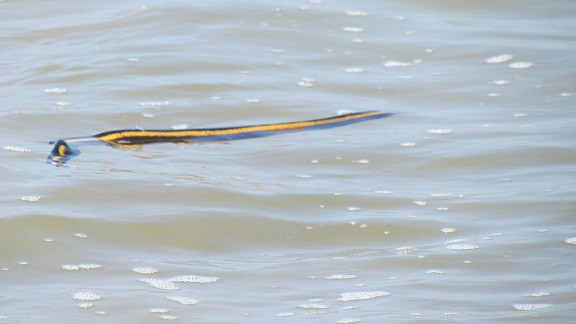
Yellow bellied sea snakes are the species most comfortable in the open seas, miles and miles from solid land. They’re happy to be dragged by ocean currents for many miles, floating aimlessly with no destination, and this brings them into contact with sailing humans. Endless fishermen have seen this snake float past their boat, instinctively taking a step back and shielding their crew. They appear to be completely floppy, but are very alert and might raise their head to look at you. It’s impossible not to think that the ocean itself dislikes you when you see one of these things.
How eerie this snake is depends on the weather. In sunny blue skies, this just looks like a fun curiosity, an interesting anomaly of the seas. But in a severe storm where you’re struggling just to keep your boat from overturning, a snake floating amidst the lashing waves might be the final straw.
Yellow-bellied sea snakes have venom with a neurotoxic quality. Deaths aren’t confirmed, but they react to touch, and have bitten children on small beaches. If one flops onto your boat then great care is required.
| 9 | Peru blind snake |
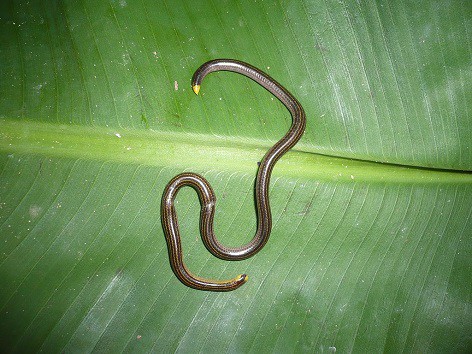
The Peru blind snake (Epictia diaplocia) is non-venomous, and likes soft soils where they burrow through using their smooth scales and tiny eyes. This snake is common in local Peruvian forests, but the eerie thing is that they prefer to stay hidden. You could know for a fact that there’s dozens along one trail, but never see them. With the certain knowledge that they’re aware of you, but not bothering to reveal themselves, the paranoia starts to build.
Peru blind snakes are a decently common species, living in a swathe of Peru and far eastern Brazil in Acre state. Yet they’re rarely seen by anyone, somehow operating away from humanity’s prying eyes. Even if you see one poking its head up, you know that it’s just the tip of the iceberg, and there’s a whole colony of others just hidden.
The Peru blind snake is believed to prey on ants and termites, with a side helping of worms. The time they’re most likely to come out is after heavy rains, and even then they usually stay below cover. This species lacks even sharp teeth to do damage with.
| 10 | Ringed tree boa |
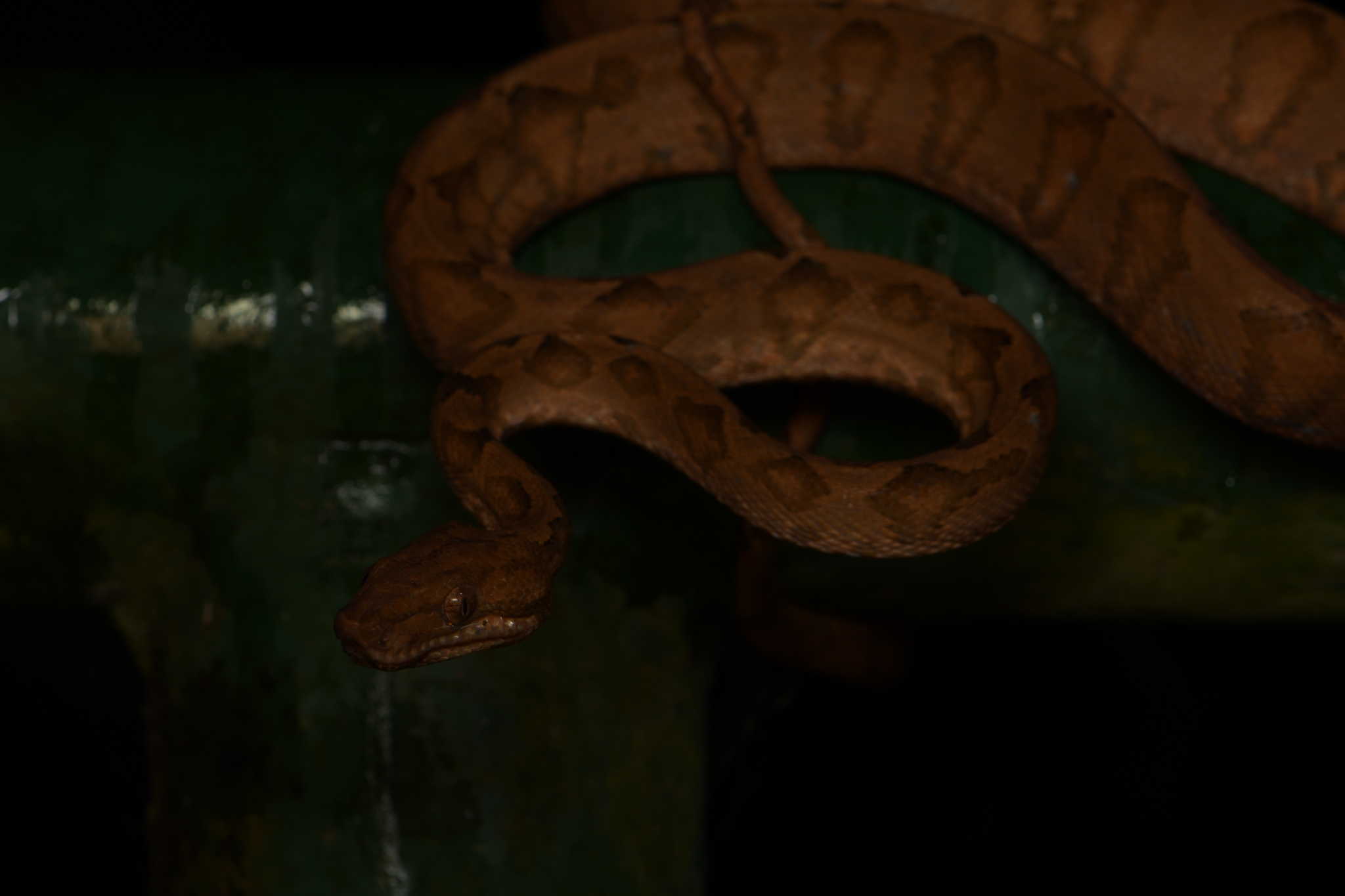
This snake is a familiar sight to the villagers of Costa Rica and Panama. The ringed tree boa is a heavily nocturnal species, meaning that they’re likely to emerge just as the sun sets. Some unfortunate souls can witness this snake in a gothic silhouette, resting on a twisting branch, 10 metres above ground, looking out onto the horizon, anticipating the night that’s about to begin, as you hurry back to your car as quickly as possible.
Whether slithering through leaves or hiding under a picnic bench, they always look like they’re in control of their surroundings, running through plans that humanity cannot possibly comprehend. Ringed tree boas vary from brown to orange, with wavy blotches. They average at 150-180cm, just bulky enough without being bogged down.
This snake has the power to become eerie regardless of the situation you put it in. The ringed tree boa has a fixed, unwavering stare, and a neutral, uncaring facial expression. They’re also able to slither up trees and pinch birds from their nests. This is a cunning, economical snake which has no patience for nonsense.
